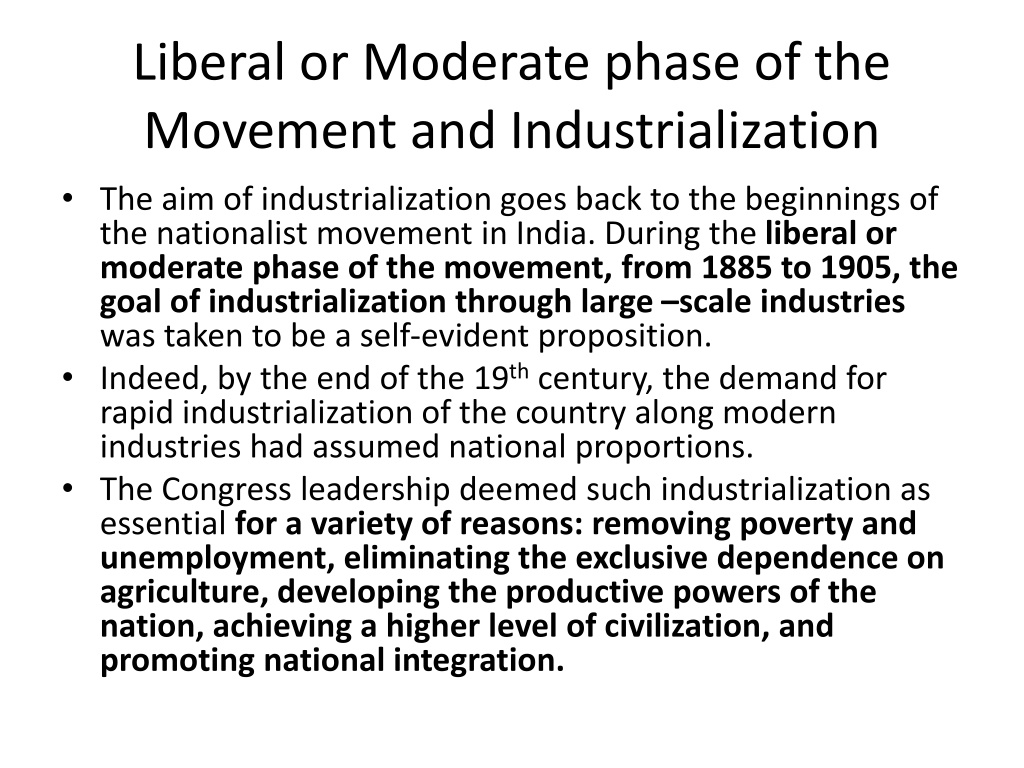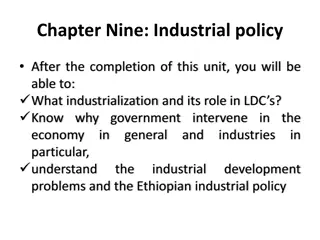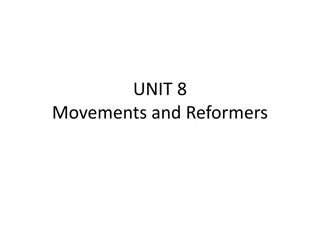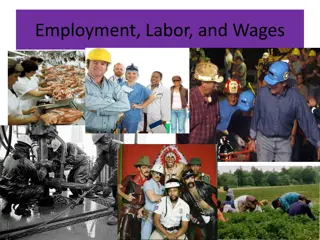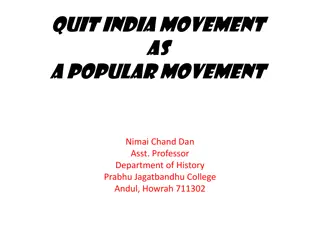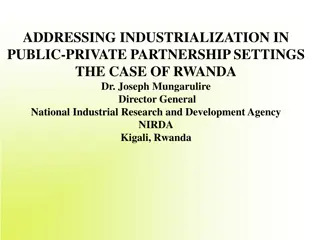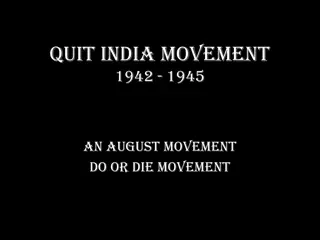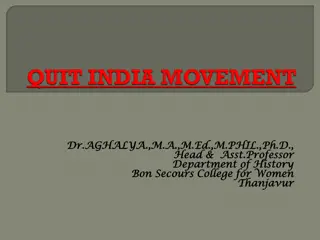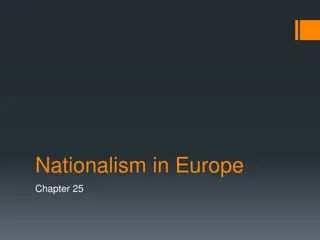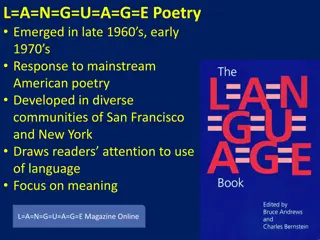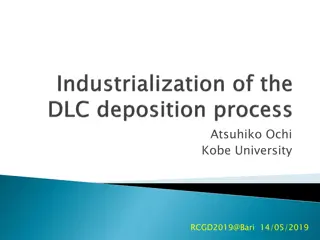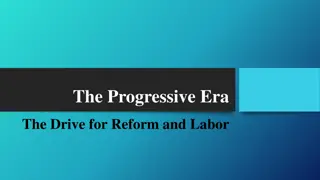Industrialization in the Nationalist Movement
The aim of industrialization in India during the liberal or moderate phase of the nationalist movement from 1885 to 1905, reflected in the ideologies of leaders like Nehru. This period saw a shift in focus from agriculture to modern industries, aiming to combat poverty, unemployment, and promote national integration through rapid industrialization. The evolution of economic ideologies towards socialism and a mixed economy, as advocated by Nehru, played a significant role in shaping India's industrial path.
Uploaded on Feb 24, 2025 | 0 Views
Download Presentation

Please find below an Image/Link to download the presentation.
The content on the website is provided AS IS for your information and personal use only. It may not be sold, licensed, or shared on other websites without obtaining consent from the author.If you encounter any issues during the download, it is possible that the publisher has removed the file from their server.
You are allowed to download the files provided on this website for personal or commercial use, subject to the condition that they are used lawfully. All files are the property of their respective owners.
The content on the website is provided AS IS for your information and personal use only. It may not be sold, licensed, or shared on other websites without obtaining consent from the author.
E N D
Presentation Transcript
Liberal or Moderate phase of the Movement and Industrialization The aim of industrialization goes back to the beginnings of the nationalist movement in India. During the liberal or moderate phase of the movement, from 1885 to 1905, the goal of industrialization through large scale industries was taken to be a self-evident proposition. Indeed, by the end of the 19thcentury, the demand for rapid industrialization of the country along modern industries had assumed national proportions. The Congress leadership deemed such industrialization as essential for a variety of reasons: removing poverty and unemployment, eliminating the exclusive dependence on agriculture, developing the productive powers of the nation, achieving a higher level of civilization, and promoting national integration.
Liberal or Moderate----(contd.) Towards that end, the moderate leadership endorsed the prescriptions of the nineteenth century German economist Friedrich List for state intervention in the economy for purposes of development, refusing to buy the laissez-faire logic preferred by the British colonial authorities. By the first decade of the 20thcentury, the moderate phase of nationalism had been overtaken by extremism and militancy. During this phase it was felt that Britain did not simply fail in actively helping with industrialization, but that it was a fact that it thwarted industrialization as a matter of deliberate state policy. As early as in 1936, in his presidential address to the Congress party at Lucknow, Nehru declared that he believed in the rapid industrialization of the country which would substantially improve the standards of the people and combat poverty.
Nehru, Socialism and the Mixed Economy Fundamentally, Nehru s vision of the public sector stood on a different footing from that of the Bombay Plan or Tata-Birla Plan (developed in 1945). For the Bombay planners, the role of the state in the economy was only temporary and for specific purposes. Their aim was to build a more flourishing industrial capitalism. Nehru, on the contrary, envisaged an ever- expanding public sector. Both absolutely and relative to the private sector, in possession of the commanding heights, fundamentally as a route to a socialist society.
National Planning Committee After he became Chairman of the National Planning Committee in 1938, Nehru increasingly turned his attention to the question of adapting socialism to Indian conditions. He came to the conclusion that the mode of transition to socialism was to be by way of a mixed economy , though it was not yet termed as such, under which all key industries were to be state-owned and state- managed. As the public sector expanded under a regime of planning in the mixed economy, the private sector would be reduced to an economic appendage, and thus a peaceful transition to socialism would take place.
Nehrus Commitment to Democracy At the same time, in contrast to orthodox Marxists who were votaries of revolution, Nehru was committed to democracy as the political route to the socialist society. Having arrived at this model before independence, Nehru had to be quiescent about socialism for several years after independence because of the turmoil of Partition and the factional divisions within the party and government. It was only in 1954, after he had consolidated his power both in the party and government, did Nehru begin to give public expression to the kind of society he eventually envisioned for India. In November that year, he made it clear that he rejected capitalism, because a system which is based purely on the acquisitive instinct is immoral and he regarded its days to be numbered.
Lok Sabha Resolution A month later, the Lok Sabha passed a resolution supporting Nehru s vision, and in January 1955 the Congress party in a historic resolution stated that planning should take place with a view to the establishment of a socialistic pattern of society, where the principal means of production are under social ownership or control, production is progressively speeded up and there is equitable distribution of the national income . Significantly, referring to the two resolutions by parliament and party, Mahalanobis acknowledged in the model document that these decisions settled, in principle, the type of economic development of India in future , and in the plan-frame he recommended: The public sector must be expanded rapidly and relatively faster than the private sector for steady advance to a socialistic pattern of economy .
The Second Five Year Plan and the Industrial Policy Resolution, 1956 The Second Five Year Plan repeated the theme: the basic criterion for determining the lines of advance must not be private profit but social gain The public sector has to expand rapidly it has to play the dominant role the public sector must grow not only absolutely but also relatively to the private sector . The Industrial Policy Resolution of 1956 then reserved solely for the public sector all industries of basic and strategic importance, or in the nature of public utility services ; not only that, other industries which are essential and require investment on a scale which only the State, in present circumstances, could provide, have also to be in the public sector. Meanwhile, the private sector was placed under a rigid system of licensing and strict controls over installation and expansion of industrial capacity.
The Third Five Year Plan and the Role of the Public Sector The Third Five Year Plan (1961) later elevated the role of the public sector to a higher level, both politically and ideologically. It posited an even more dominant role for the public sector in economic development, and projected it to grow both absolutely and in comparison and at a faster rate than the private sector . The end purpose in assigning this role to the public sector was the achievement of a socialist society: In an underdeveloped country, a high rate of economic progress and the development of a large public sector and a cooperative sector are among the principal means for effecting the transition towards socialism . Thus, once the principal means of production would come to be publicly owned while the private sector had been drastically reduced to a relatively insignificant position, the transition to socialism would be completed. Indeed, Nehru believed in respect of the future of the private sector that it would gradually and ultimately fade away.
